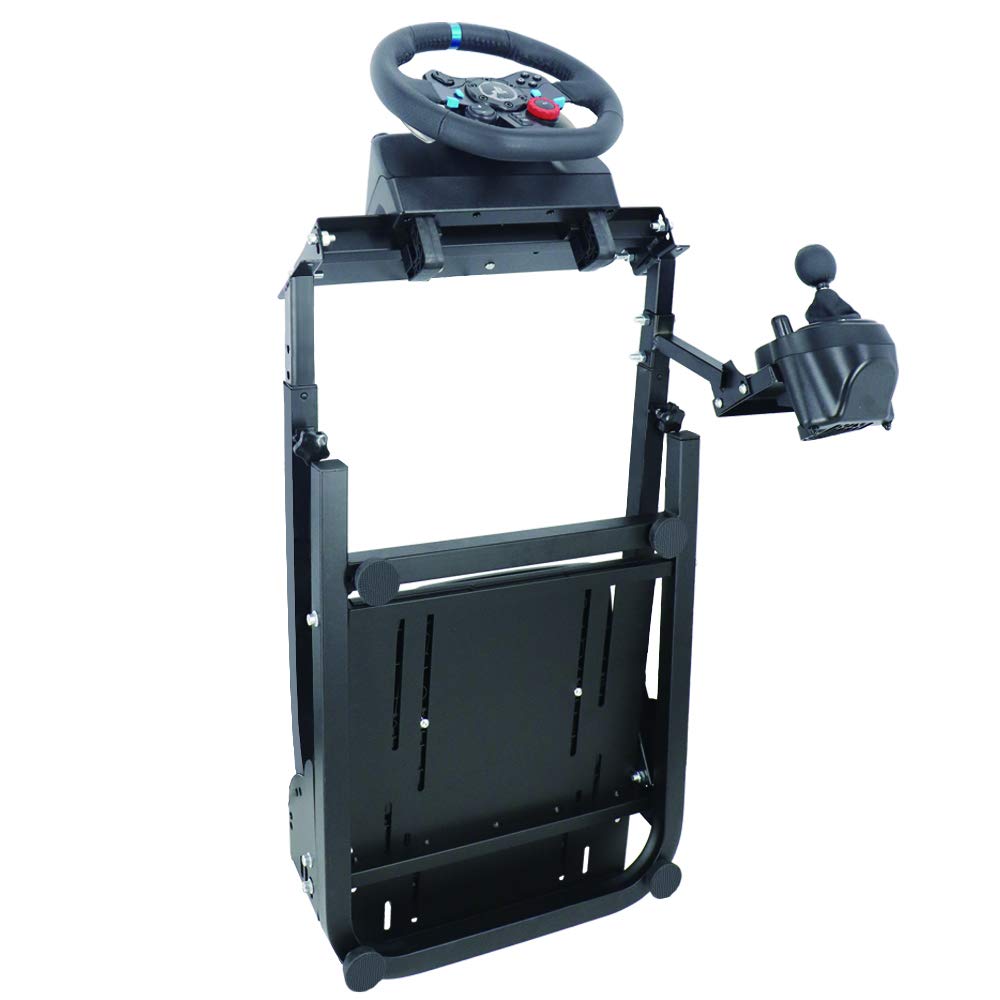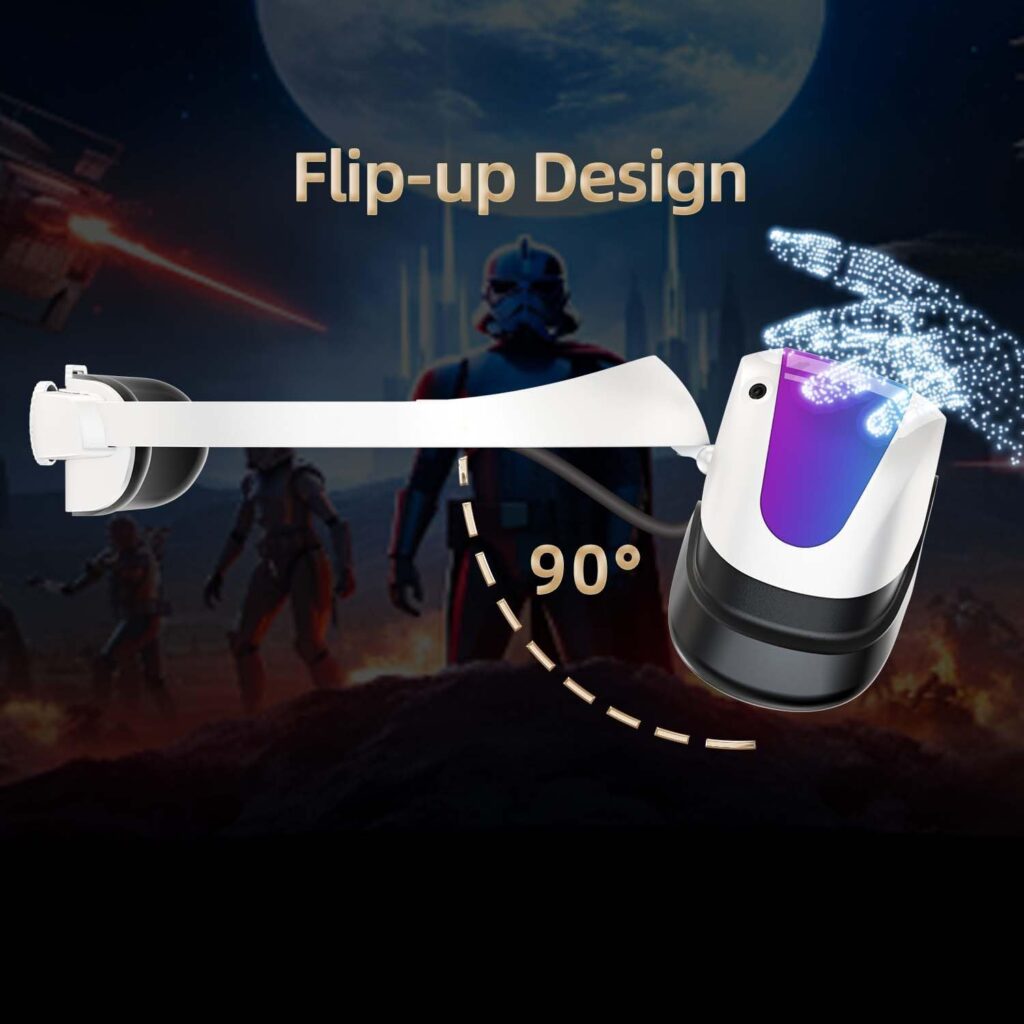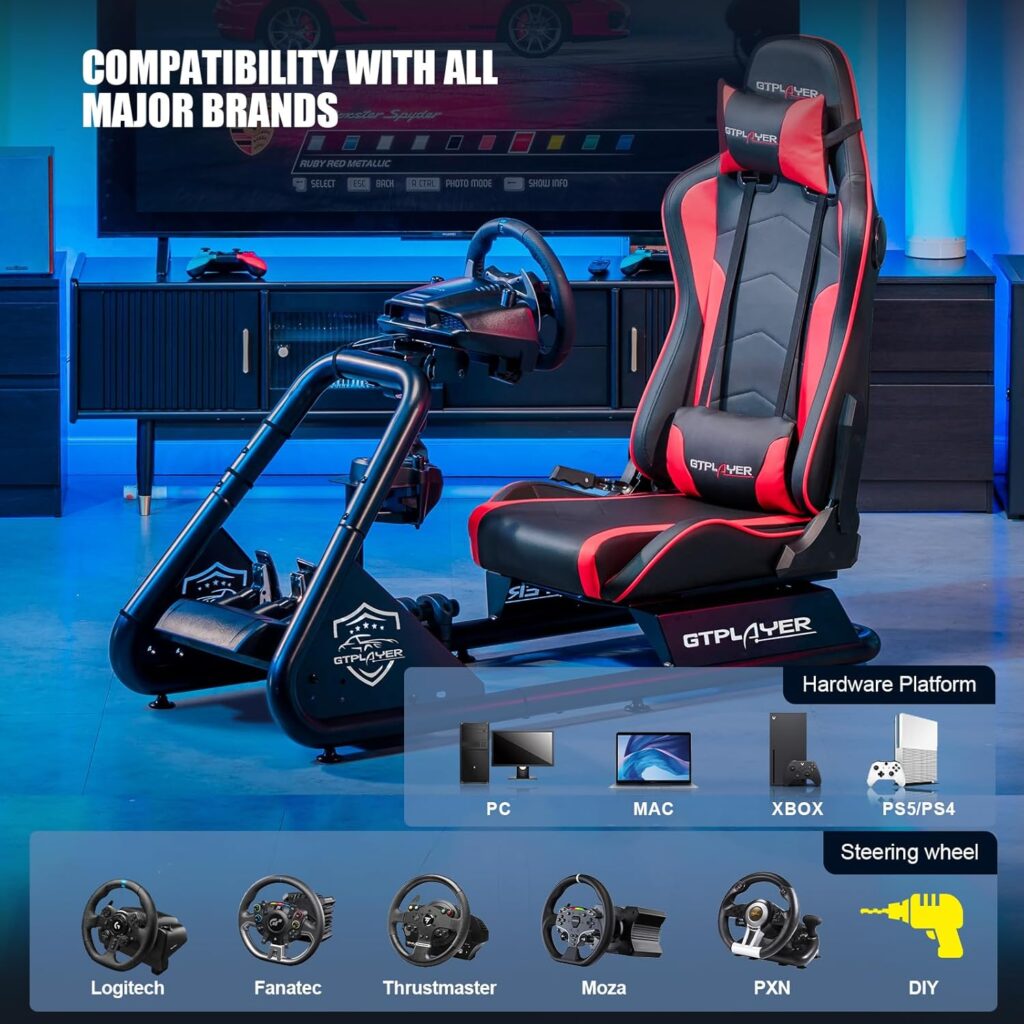When it comes to force feedback strength, sim racers are often left wondering what is truly the best setting. The quest for the perfect balance between realism and enjoyment can be a challenging one. You may find yourself pondering the power of the force feedback, questioning whether a higher strength will provide a more immersive experience.
But hold on, before you make any adjustments, it's important to consider the various factors that come into play. So, let's explore the world of force feedback and uncover the secrets behind finding the optimal strength that will truly elevate your racing experience.
Key Takeaways
- Different wheel types (direct drive, belt-driven, gear-driven) affect force feedback
- Proper force feedback scaling matches physics engine forces to wheel capabilities
- Trial and error is crucial to finding the optimal force feedback strength
- Experimentation and incremental changes are necessary to find the right strength
Understanding Force Feedback Strength
To understand force feedback strength, it's important to consider the impact of different wheel types and the need for proper force feedback scaling. The strength of force feedback directly affects the realism and immersion in your racing experience.
Different steering wheel types, such as direct drive, belt-driven, and gear-driven, can have varying effects on the force feedback you feel. Direct drive wheels, for example, provide a stronger and more direct force feedback experience compared to belt-driven or gear-driven wheels.
Proper force feedback scaling is crucial to match the physics engine's forces to the capabilities of your wheel. It ensures that the forces you feel through the wheel accurately represent the forces acting on the virtual car. Adjusting the force feedback settings based on your wheel type and personal preference is essential to achieve the desired balance between realism and drivability.
However, it's important to note that running force feedback at high settings may result in a heavy and slightly erratic wheel. While some racers may find this appealing subjectively, it may not necessarily reflect the behavior of a real car objectively.
Finding the optimal force feedback strength through trial and error, considering both wheel and force feedback settings, is crucial to achieving the most realistic and enjoyable racing experience.
Factors to Consider When Choosing Force Feedback Strength
Consider various factors when choosing the appropriate force feedback strength for your racing experience. Making the right choice will enhance your immersion and improve your overall performance on the virtual track. Here are five key factors to consider:
- Type of wheel: Different types of wheels, such as direct drive, belt-driven, and gear-driven, can affect the amount of force feedback strength you can achieve. Direct drive wheels, like those in the Fanatec range, are known to provide better feel and more accurate force feedback.
- Steering wheel setup: Optimizing force feedback strength requires proper calibration of your steering wheel, firmware settings, and adjusting the settings in your racing simulator. Paying attention to these details will ensure that you're getting the most out of your force feedback system.
- Force feedback scaling: Understanding the physics engine and how it calculates force feedback is crucial for proper scaling. Improper scaling can lead to weak force feedback or clipping, resulting in a loss of detail and realism in the feedback.
- Problems with incorrect settings: Incorrect force feedback settings can have significant negative impacts on your racing experience. Weak force feedback can make it difficult to feel the car's movements, while excessive force feedback can cause distortion and loss of control.
- Trial and error: Finding the right force feedback strength often requires experimentation and adjustment. It's essential to test different settings and make small incremental changes to achieve the desired level of force feedback strength.
Considering these factors will help you choose the optimal force feedback strength for your racing setup, ensuring an immersive and realistic driving experience.
Whether you're using a Logitech G wheel or a high-end direct drive system, understanding these factors will allow you to make informed decisions and fine-tune your force feedback settings to suit your preferences.
Exploring Different Levels of Force Feedback Strength
When exploring different levels of force feedback strength, it's essential to understand how adjustments in this area can greatly impact your overall racing experience. The force feedback strength refers to the intensity of the forces that the wheel transmits to your hands, providing you with a realistic feel of the road and vehicle dynamics.
By experimenting with different levels of force feedback strength, you can tailor the feedback to your preferences and enhance your immersion in the virtual racing world.
To begin exploring different levels of force feedback strength, it's important to consider the type of wheel you're using. Different wheel types can have varying force feedback capabilities, which can influence the overall feel and strength of the feedback. Understanding the capabilities of your wheel and its compatibility with different force feedback settings can help you achieve the desired level of immersion.
Another critical aspect to consider when exploring force feedback strength is proper scaling. Force feedback scaling ensures that the forces transmitted by the physics engine are matched appropriately to the capabilities of your wheel. Incorrect scaling can lead to weak or overpowering force feedback, negatively impacting your racing experience.
To find the optimum force feedback strength, it's recommended to start with a conservative setting and gradually increase or decrease it based on your preferences. The range of force feedback strength typically varies between 1% and 100%, and finding the right level for you may require trial and error.
Pros and Cons of Low Force Feedback Strength
Low force feedback strength in racing games has both advantages and disadvantages that should be carefully considered.
Pros of low force feedback strength include:
- Reduced physical strain on the driver, making long gaming sessions more comfortable.
- Less chance of the wheel overheating or wearing out quickly due to excessive force feedback.
- More forgiving for entry-level wheels that may not handle high force feedback settings well.
- Easier to handle and control, especially for beginners who are still developing their driving skills.
- Provides a smoother and more predictable driving experience, especially on bumpy or rough tracks.
However, there are also cons to low force feedback strength. One major downside is the reduced level of immersion and realism in the driving experience. With lower force feedback, there's less detailed feedback on road textures, bumps, and weight transfer of the car. This limited ability to feel the nuances of the car's behavior can potentially affect overall performance. Moreover, low force feedback may result in less precise control and responsiveness, particularly in high-speed or challenging driving situations. The diminished ability to simulate the physical demands and sensations of real-life driving is another drawback of low force feedback strength.
Considering both the pros and cons, it's important to find the right balance of force feedback strength that suits your preferences and gaming style.
Pros and Cons of High Force Feedback Strength
With a shift to the discussion on the pros and cons of high force feedback strength, it's crucial to examine the potential benefits and drawbacks associated with this increased level of tactile feedback in racing games.
High force feedback strength offers several advantages. Firstly, it enhances immersion by replicating the physical sensations of driving a car, resulting in a more realistic experience. Additionally, strong force feedback settings provide enhanced detail, allowing drivers to feel every bump, rumble strip, and weight transfer of the car, further immersing them in the virtual racing environment.
However, there are also drawbacks to consider. High force feedback settings may lead to instability, requiring the driver to grip the wheel tightly, causing physical strain during longer gaming sessions. Furthermore, overloading the wheel with high force feedback settings can potentially lead to equipment wear, particularly with older or weaker wheel models, as it can cause overheating and faster deterioration.
Lastly, it's important to note that the preference for high force feedback strength is subjective. While some drivers may enjoy the heavy and slightly erratic feel, it may not accurately reflect the behavior of a real car and can be a matter of personal preference.




